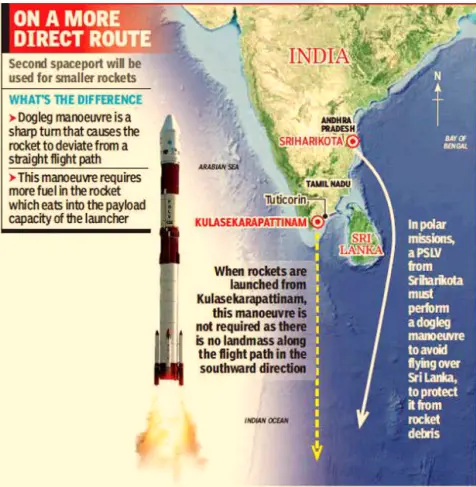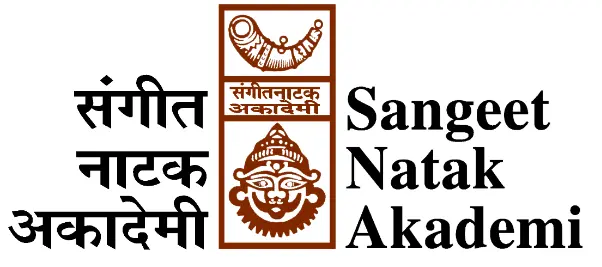Friday, 15th March 2024
Dung-to-BioCNG Conversion
In News: The Banaskantha District Co-operative Milk Producers’ Union in Gujarat is transforming dung into BioCNG and fertilizer, providing farmers with additional income.
Harnessing the Value of Dung: A Farmer's Perspective
Understanding Dung Facts
- Dung Composition
- An adult bovine animal releases 15-20 kg of fresh dung daily, with calves yielding 5-10 kg.
- Fresh dung contains 80-85% water, making it ideal for biogas production through anaerobic digestion.
- Methane, a crucial component of biogas, is produced in the rumen of bovines during fermentation.
Biogas Production Process
- Anaerobic Digestion
- Fresh dung mixed with water undergoes anaerobic digestion in a sealed vessel reactor for about 35 days.
- The process involves hydrolysis, acidogenesis, acetogenesis, and methanogenesis stages.
- Biogas digesters reduce methane emissions from animal waste, aiding in greenhouse gas mitigation.
- Biogas Purification and Compression
- Raw biogas is purified to remove impurities like CO2, H2S, and moisture.
- Purified biogas, compressed to 96-97% methane, is sold as BioCNG, offering additional income for farmers.
- Utilization of Slurry for Fertilizer Production
- After biogas production, the slurry is dewatered and processed into PROM or compost, providing organic fertilizer options.
Scalability and Replicability
- BioCNG Model
- The BioCNG model is scalable and replicable, utilizing dung from district member unions.
- Decentralized models like Gujarat's Kaira Union's Flexi Biogas plants target widespread adoption.
Key Challenges and Solutions
- Feedstock Management
- Ensure consistent supply and quality of organic feedstock through effective waste management systems.
- Operational Efficiency
- Provide training, technical support, and standard operating procedures to enhance BioCNG plant maintenance and performance.
- Technical and Financial Barriers
- Overcome initial capital barriers with financing options and address technical challenges through partnerships and capacity-building programs.
- Storage Systems for Biogas
- Implement efficient storage systems like gas holders to ensure consistent supply and distribution of BioCNG.
- Social Acceptance
- Educate farmers and communities about the hygienic and safe process of biogas production to promote widespread adoption.
India's Initiatives Related to Biogas
- SATAT Scheme: Promotes the use of biogas as an alternative fuel for transportation.
- GOBARdhan: Encourages the conversion of cattle dung and other organic waste into biogas and compost.
- National Biogas Programme: Supported by the Ministry of New and Renewable Energy, facilitating the installation of biogas plants across the country with financial assistance.
|
UPSC Previous Year Questions Prelims (2019) Q. Consider the following:
Which of the above are released into the atmosphere due to the burning of crop/biomass residue? (a) 1 and 2 only Ans: (d) Mains (2018) Q. What are the impediments in disposing the huge quantities of discarded solid waste which are continuously being generated? How do we remove safely the toxic wastes that have been accumulating in our habitable environment? |
Source: IE
National Urban Cooperative Finance and Development Corporation Limited
In News: The inauguration of the National Urban Cooperative Finance and Development Corporation Limited (NUCFDC), serving as a central organization for urban cooperative banks (UCB), was officiated by the Union Minister for Cooperation.
Understanding Urban Cooperative Banks (UCBs)
Definition and Purpose
- Cooperative banks are member-owned financial institutions catering to the banking needs of communities.
- UCBs specifically serve urban and semi-urban areas, offering banking services and loans to local residents.
Historical Background
- Originated in late 19th century India, inspired by successful cooperative models in Britain and Germany.
- Earliest mutual aid society, "Anyonya Sahakari Mandali," established in the princely State of Baroda.
- First urban cooperative credit society registered in Canjeevaram (Kanjivaram) in Madras province in 1904.
Regulatory Framework
- Regulated by the Reserve Bank of India (RBI) under the Banking Regulation Act, 1949.
- Insured by the Deposit Insurance and Credit Guarantee Corporation.
Four Tier Structure
- Proposed by the N. S. Vishwanathan committee in 2021.
- Tiered structure based on deposit size: Tier 1 to Tier 4.
- Minimum capital and risk-weighted asset requirements vary across tiers.
Current Status
- India hosts 1,514 UCBs, contributing 11% to total agricultural credit.
- Total deposit base of UCBs amounts to ₹5.26 trillion.
Major Issues and Challenges
- High Non-performing Assets (NPAs)
- NPAs remain a significant concern, impacting profitability and stability.
- Contributing factors include poor credit appraisal practices and inadequate risk management frameworks.
- Limited Technology Adoption
- Insufficient technological infrastructure hampers UCBs' ability to offer modern banking services.
- Lack of investment in technology leads to operational inefficiencies and risks.
- Fraud and Mismanagement
- Instances of fraud and mismanagement have been reported, affecting depositor confidence.
- RBI has cancelled licenses of several cooperative banks due to financial irregularities.
Way Forward
- Transparency and Accountability: Embrace transparency in operations and financial reporting.
- Proactive Credit Risk Management: Implement robust credit risk management practices.
- Capacity Building: Invest in training and capacity building initiatives for UCB staff.
|
UPSC Previous Year Questions Prelims (2015) Q. With reference to ‘Urban Cooperative Banks’ in India, consider the following statements:
Which of the statements given above is/are correct? (a) 1 only Ans: (b) |
Source: TH
Pradhan Mantri Samajik Utthan and Rozgar Adharit Jankalyan (PM-SURAJ)
In News: PM Modi virtually inaugurated the Pradhan Mantri Samajik Utthan evam Rozgar Adharit Jankalyan (PM-SURAJ) portal, aimed at providing credit support to entrepreneurs from marginalized communities.

PM-SURAJ Portal: Empowering Disadvantaged Sections
- Acts as a unified platform for disadvantaged individuals to apply for and track the progress of various loan and credit schemes.
- Aims to provide direct financial assistance, eliminating intermediaries and commissions.
- Focuses on uplifting marginalized segments of society.
- Implemented by the Ministry of Social Justice and Empowerment and its departments.
Previous Efforts Towards Inclusive Development
- Ensuring basic facilities like gas connections, bank accounts, and toilets for Dalits, backward classes, deprived, and tribal communities.
- Doubling of assistance provided to SC communities in the past decade, with nearly ₹1.6 trillion allocated for their welfare this year.
- Initiatives such as reservation in medical seats, support in examinations, and scholarships for underprivileged students.
- Launch of the Ambedkar Social Innovation and Incubation Mission to promote entrepreneurship among Dalits.
NAMASTE Scheme: Ensuring Dignity and Livelihood for Sanitation Workers
- Objective: Ensure safety and dignity of sanitation workers in urban areas while providing sustainable livelihoods.
- Ministries Involved: Ministry of Social Justice & Empowerment and Ministry of Housing and Urban Affairs.
- Implementing Agency: National Safai Karamchari Financial Development Corporation (NSKFDC).
- Coverage: Implementation in 500 cities (aligned with AMRUT cities) for the period 2022-26.
Key Aims of NAMASTE Scheme
- Zero fatalities in sanitation work.
- Skilled sanitation workforce.
- Elimination of direct contact with human waste.
- Empowerment of sanitation workers through collective action and entrepreneurship.
- Providing alternative livelihoods for sewer and septic tank sanitation workers (SSWs).
Components of the Scheme
- Extending Insurance Scheme Benefits: Coverage under Ayushyaman Bharat- Pradhan Mantri Jan Arogya Yojana (AB-PMJAY) and premium coverage for identified SSW families.
- Livelihood Assistance: Promotion of mechanization, enterprise development, and skill acquisition for SSWs and their dependents.
- Other Assistance: Capital and interest subsidies on sanitation machinery, capped interest rates, and stipends during training.
Source: PIB
Boosting Exports from MSMEs in India
In News: A recent report by Niti Aayog focuses on enhancing exports from Micro, Small, and Medium Enterprises (MSMEs).
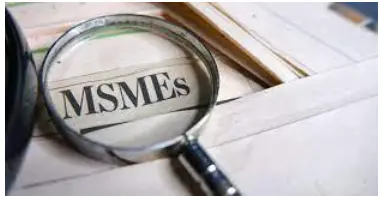
MSMEs in India: Driving Economic Growth
Contribution to Economy
- Widely recognized as the backbone of the Indian economy.
- Account for over 11 crore jobs and contribute approximately 27.0% to India's GDP.
- Comprising around 6.4 crore MSMEs, with 1.5 crore registered on the Udyam portal.
- Employ approximately 23.0% of the Indian labor force, ranking as the second-largest employer after agriculture.
- Contribute 38.4% to total manufacturing output and 45.03% to the country's total exports.
Export Potential of MSMEs
- Offers substantial potential for export growth.
- Sectors like handicrafts, handloom textiles, ayurveda, herbal supplements, leather goods, imitation jewelry, and wooden products hold promising export opportunities.
- Global markets for these sectors exceed USD 340 billion, dwarfing domestic markets.
- Small firms face challenges in accessing export markets due to economies of scale, compliance requirements, production costs, and logistics management.
NITI Aayog Recommendations to Boost MSME Exports
- Create One-Stop Information Channel for Exporters
- Establish a comprehensive information portal using AI-based interface to provide up-to-date information to MSMEs.
- Establish National Trade Network (NTN)
- Develop an end-to-end trade portal to streamline export processes and documentation, reducing bureaucratic hurdles.
- Promote E-commerce Exports
- Simplify export compliance processes, differentiate between Exporter on Record (EOR) and Seller on Record (SOR), and exempt import duties on rejects/returns to encourage e-commerce exports.
- Promote Ease of Merchandise Exports
- Offer relaxation from certain compliance requirements for MSMEs, especially as they venture into export markets, and provide forgiveness for errors during the learning phase.
- Improve Access to Export Finance
- Promote Export Credit Guarantee to enhance working capital availability for MSMEs.
- Ensure Accurate Measurement
- Integrate DGFT trade data with GST and income tax data using PAN numbers as identifiers to provide a reliable depiction of MSME exports.
Source: TH
Atmospheric Research Testbed
In News: The first phase of the Atmospheric Research Testbed in Central India (ART-CI) was inaugurated virtually by the Minister of Earth Sciences in Sehore district, Madhya Pradesh.

About the Atmospheric Research Testbed (ART-CI)
- Established by the Indian Institute of Tropical Meteorology (IITM), under the Ministry of Earth Sciences (MoES), at Silkheda.
- Aimed at gaining a better understanding of processes governing monsoon convection.
Phases
- First Phase: Focuses on setting up an ART in central India to study convection, land-atmosphere interactions, and precipitation processes.
- Second Phase: Planned for the northeast/eastern part of the country to study severe thunderstorm processes.
Objectives
- Enhance understanding of processes governing monsoon convection and land-atmosphere interactions in the monsoon core region.
- Utilize state-of-the-art observational systems to measure relevant meteorological parameters.
- Conduct intense observational campaigns and weather prediction model runs to test hypotheses and improve physical parameterizations related to convection and land surface processes.
Outreach and Dissemination
- Facilitate outreach, training, and dissemination of ART-CI datasets.
- Transform the testbed into an international facility for intense observational campaigns and testing physical parameterization schemes, including sensitivity runs.
Instrumentation
- Equipped with approximately 25 high-end instruments, including:
- Aethalometer for aerosol studies.
- Cloud condensation nuclei counter.
- Laser ceilometer for measuring cloud sizes.
- Micro rain radar for calculating raindrop size and distribution.
- Additionally, features a Ka-band cloud radar and a C-band Doppler weather radar for tracking rain-bearing systems.
Source: IE
Euscorpiops Krachan
In News: A newly identified scorpion species, scientifically named Euscorpiops Krachan, was recently uncovered by researchers.
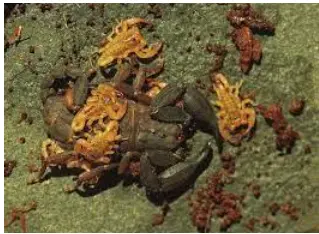
About Euscorpiops Krachan
- The newly discovered species is named Euscorpiops Krachan, belonging to the subgenus Euscopiops, named after the Krachan National Park in Thailand, where it was discovered.
- Scorpions within this genus are known for their limited distribution ranges and high degree of endemism.
- They are predominantly found in mountainous areas, especially in regions with numerous rock crevices.
- Characteristics:
- Euscorpiops Krachan shares most features with other scorpions of the subgenus Euscorpiops.
- Despite belonging to the same subgenus, they are notably smaller, measuring just over 1 inch in length.
- Their coloration is brownish, with females typically darker than males.
- They possess eight eyes and eight legs, characteristic of scorpions.
- Hunting Behavior:
- Similar to other members of the Scorpiops genus, the newly discovered species likely employs ambush or sit-and-wait strategies while hunting.
Source: MC
Electric Mobility Promotion Scheme 2024
In News: The Ministry of Heavy Industries recently unveiled the Electric Mobility Promotion Scheme 2024.

About Electric Mobility Promotion Scheme 2024
- The Electric Mobility Promotion Scheme 2024 aims to expedite the adoption of Electric Vehicles (EVs) across the nation.
- It is a time-bound scheme with a total budget of Rs. 500 crore allocated for a duration of four months, starting from April 1, 2024, to July 31, 2024.
- The scheme primarily focuses on promoting the faster adoption of electric two-wheelers (e-2W) and three-wheelers (e-3W), aiming to bolster green mobility and foster the development of the EV manufacturing ecosystem in India.
- Eligible EV categories under the scheme include electric two-wheelers (e-2W) and three-wheelers (e-3W), including registered e-rickshaws, e-carts, and L5 (e-3W).
- The scheme primarily targets electric vehicles registered for commercial purposes, with a focus on providing affordable and eco-friendly public transportation options.
- Additionally, privately or corporately owned registered e-2W vehicles will also qualify for the scheme, alongside those intended for commercial use.
- Incentives under the scheme will be extended to vehicles equipped with advanced battery technology, promoting the adoption of innovative and sustainable technologies in the EV sector.
- The nodal ministry overseeing the Electric Mobility Promotion Scheme 2024 is the Ministry of Heavy Industries.
Source: PIB
Global Methane Tracker 2024
In News: According to the International Energy Agency's Global Methane Tracker 2024, methane emissions from fuel use in 2023 approached record levels, reaching approximately 120 million tonnes (Mt).

About Global Methane Tracker 2024
- The Global Methane Tracker is an annual report issued by the International Energy Agency (IEA) that provides insights into methane emissions from the energy sector.
- It incorporates the latest data on methane emissions, including findings from scientific studies, measurement campaigns, and satellite observations.
- Key highlights from the Global Methane Tracker 2024 include:
- Methane emissions from fuel use in 2023 were nearly the highest ever recorded, reaching 120 million tonnes (Mt), with a slight increase compared to 2022.
- An additional 10 million tons of emissions were attributed to bioenergy, a renewable energy source derived from plant and animal waste.
- Approximately 80 million tons of methane emissions came from the top 10 emitting countries, with the United States leading in emissions from oil and gas operations, followed closely by Russia. China topped emissions from coal operations.
- While emissions are declining in some regions, overall methane emissions remain excessively high to meet global climate targets.
- To achieve the Paris Agreement goal of limiting warming to 1.5°C, the world must reduce methane emissions from fossil fuels by 75 percent by 2030.
- The IEA estimates that meeting this target would require approximately $170 billion in investment, which is less than 5 percent of the fossil fuel industry's income in 2023.
Source: DTE
Lyme Disease
In News: Recently, a case of Lyme disease was reported in the Ernakulam district of Kerala.
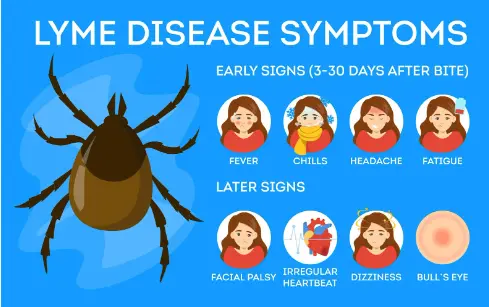
About Lyme Disease
- Lyme disease, caused by the bacterium Borrelia burgdorferi, is a vector-borne infectious disease.
- Transmission occurs primarily through the bite of infected black-legged ticks, commonly known as deer ticks.
- Lyme disease cannot be spread between humans, from pets to humans, or through air, food, or water. Lice, mosquitoes, fleas, and flies do not transmit it.
- It is prevalent in wooded and grassy areas worldwide, especially during warmer months, and is commonly reported in North America, Europe, and some parts of Asia.
- Symptoms typically appear 3 to 30 days after an infected tick bite and include fever, headache, fatigue, and a characteristic "bull's-eye" red rash called erythema migrans (EM).
- Erythema migrans serves as a hallmark sign for early diagnosis and management of Lyme disease.
- Left untreated, Lyme disease can lead to severe complications affecting the joints, heart, and nervous system.
- Standard treatment involves antibiotics such as doxycycline or amoxicillin, particularly in the early stages. In later stages, intravenous antibiotics may be necessary.
Source: TOI
Small and Medium Real-Estate Investment Trusts
In News: Sebi recently amended the 2014 REIT Regulations to introduce provisions for establishing small and medium real estate investment trusts, commonly referred to as SM REITs or micro REITs.
About Small and Medium Real-Estate Investment Trusts
- Small and Medium Real-Estate Investment Trusts (SM REITs) are specialized real estate investment trusts that deviate from conventional REITs in terms of scale and focus.
- The objective of SM REITs is to regulate the fractional ownership industry and protect investor interests by encompassing both commercial and residential properties under a new framework.
- The minimum subscription size for a scheme unit in SM REITs is set at 10 lakh and is considered as one unit.
- A minimum of 200 unit holders, excluding the investment manager, its related parties, and associates, is required for the SM REIT scheme.
- The investment manager establishing an SM REIT must possess a net worth of at least ₹20 crore, and a separate trustee will be appointed to oversee the operations.
- Micro REITs are eligible for listing with asset values ranging from Rs 50 crore to a maximum of Rs 500 crore.
- The funds raised through SM REITs are utilized for acquiring and managing real estate assets, aiming to generate income for investors.
- Ownership of these assets is structured through one or more schemes, each operating under special purpose vehicles (SPVs).
- Unlike traditional REITs, which primarily invest in large-scale commercial properties like office buildings and shopping malls, SM REITs focus on smaller and medium-sized properties with lower value.
Source: ET
India’s R&D funding, breaking down the numbers
In News: A recent article discusses India's growing research and development (R&D) sector, marked by increased Gross Expenditure on Research and Development (GERD).
Positive Aspects of R&D Funding in India
- Academic Talent Production
- India ranks third globally in producing PhDs, reflecting its commitment to nurturing intellectual capital.
- The country's research output, with over 300,000 publications in 2022, highlights a robust research ecosystem.
- Patent Grants Performance
- India secures the sixth position globally in patent grants, signaling an evolving innovation landscape.
- Emphasis on Autonomous R&D
- Significant government funding supports autonomous R&D laboratories, vital for driving strategic research and technology development.
- Interim Budget 2024-25 Provisions
- Establishment of a Rs.1 lakh crore corpus and launching a new scheme for strengthening deep-tech technologies demonstrate a commitment to R&D advancement.
Concerns in R&D Funding in India
- Low R&D Investment Percentage
- India's R&D investment as a percentage of GDP remains low compared to major economies, hindering its global competitiveness.
- Limited Private Sector Contribution
- Private sector investment in R&D lags behind global trends, impacting overall funding and innovation.
- Under-Utilization of Allocated Funds
- Under-utilization of allocated funds in key departments indicates bureaucratic hurdles and lack of efficient planning.
- State Governments' Inadequate Allocation
- State governments allocate minimal funds for research, hindering the development of research infrastructure and innovation.
Steps to Enhance R&D Funding in India
- Encouraging Private Sector Collaboration
- Facilitate stronger industry-academia partnerships to drive innovation and knowledge transfer.
- Increasing R&D Expenditure Percentage
- Aim for at least 1-3% of GDP allocation for R&D to match global standards and spur economic growth.
- Enhancing Role of HEIs
- Strengthen involvement of Higher Education Institutions (HEIs) in R&D to bolster innovation and research output.
- Bridging Manufacturing Aspirations
- Foster private sector engagement and fortify academia's research infrastructure to bridge existing gaps in R&D.
- Mandating Proper Fund Utilization
- Ensure efficient utilization of allocated funds through strengthened monitoring and evaluation mechanisms.
- Prioritizing State Government Expenditure
- Increase public sector R&D spending at the state level to improve research facilities and innovation.
Conclusion
Government initiatives, combined with strategic budget allocations and legislative measures, demonstrate a commitment to advancing R&D in India. However, addressing concerns such as low investment percentage and bureaucratic inefficiencies is crucial for realizing the nation's potential as a global research and innovation hub.
|
UPSC Previous Year Questions Prelims (2015) Q. 1 Which of the following statements is/are correct regarding National Innovation Foundation-India (NIF)?
Select the correct answer using the code given below: (a) 1 only Ans: (a) Prelims (2009) Q.2 For outstanding contribution to which one of the following fields is Shanti Swarup Bhatnagar Prize given? (a) Literature Ans: (c) Prelims (2019) Q.3 Atal Innovation Mission is set up under the (a) Department of Science and Technology Ans: (c) |
Source: TH
Share the article
Edukemy’s Current Affairs Quiz is published with multiple choice questions for UPSC exams
MCQ
Get Latest Updates on Offers, Event dates, and free Mentorship sessions.

Get in touch with our Expert Academic Counsellors 👋
Frequently Asked Questions
UPSC Daily Current Affairs focuses on learning current events on a daily basis. An aspirant needs to study regular and updated information about current events, news, and relevant topics that are important for UPSC aspirants. It covers national and international affairs, government policies, socio-economic issues, science and technology advancements, and more.
UPSC Daily Current Affairs provides aspirants with a concise and comprehensive overview of the latest happenings and developments across various fields. It helps aspirants stay updated with current affairs and provides them with valuable insights and analysis, which are essential for answering questions in the UPSC examinations. It enhances their knowledge, analytical skills, and ability to connect current affairs with the UPSC syllabus.
UPSC Daily Current Affairs covers a wide range of topics, including politics, economics, science and technology, environment, social issues, governance, international relations, and more. It offers news summaries, in-depth analyses, editorials, opinion pieces, and relevant study materials. It also provides practice questions and quizzes to help aspirants test their understanding of current affairs.
Edukemy's UPSC Daily Current Affairs can be accessed through:
- UPSC Daily Current Affairs can be accessed through Current Affairs tab at the top of the Main Page of Edukemy.
- Edukemy Mobile app: The Daily Current Affairs can also be access through Edukemy Mobile App.
- Social media: Follow Edukemy’s official social media accounts or pages that provide UPSC Daily Current Affairs updates, including Facebook, Twitter, or Telegram channels.



